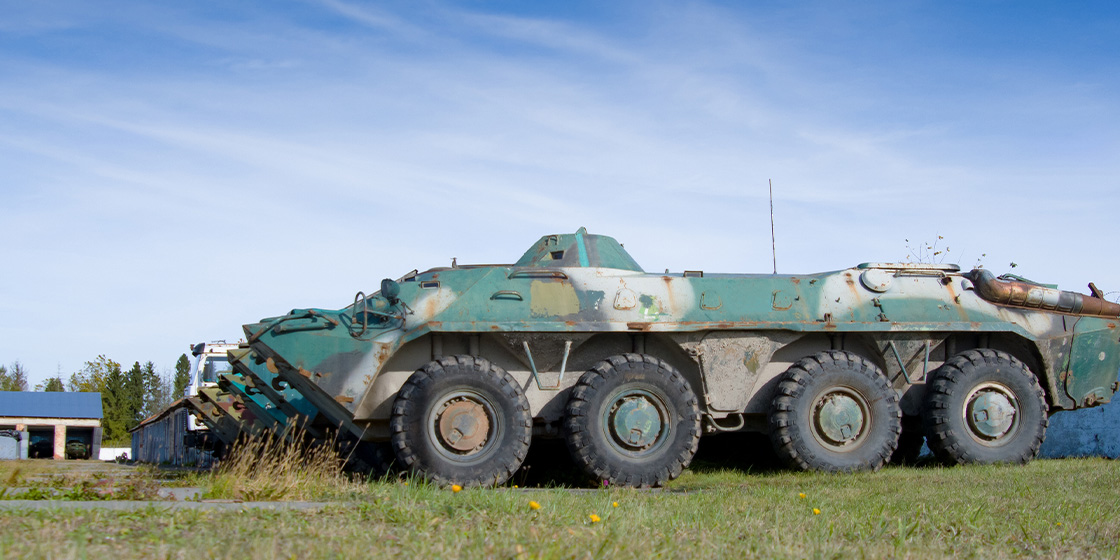After many years of threats and global geopolitical concern, the last couple of days has seen Russia decide to invade their neighbors Ukraine.
Under the leadership of Vladimir Putin, thousands of troops have crossed the border and this has caused ripple effects throughout the global economy. All of this comes on the back of a really challenging two years of dealing with the COVID-19 pandemic.
Here at Nastah, like many others, we’ve been considering how this war is going to affect us going forward and what it means for the future of our business. We produce a wide range of rubber gloves and so the immediate concern was what would happen to the rubber sector as a result of this senseless war.
History has shown us that war can have wide-reaching effects on the rubber industry because of the unique nature of the raw materials that go into it.
After realizing that many of our stakeholders were in a similar position to us, we thought that we’d use this article to lay out what is at stake for the rubber sector and where we think things could go from here.
The Impact of Increasing Oil Prices
Russia is the third-largest oil producer in the world, producing around 10% of the global supply which then gets exported to countries all around the world. This fact gives them enormous economic and political leverage because of the reliance that many other countries have on them to produce their energy.
As the world implements more aggressive sanctions and the Russian economy wilts from the pressure, the expectation from economists is that the price of oil is likely to skyrocket. In the rubber industry, this is not good news.
- As synthetic rubber uses crude oil as the key raw material, we’re likely to see those prices increase significantly over the coming weeks.
This will then force rubber product manufacturers to raise their own prices in order to stay competitive and this cascading effect will cause the cost to the end consumer to rise up accordingly. What this will do to demand is uncertain, but it will certainly put pressure on the industry to maintain its resiliency and relevance – especially as the COVID demand starts to wane.
- Some producers will seek to switch to natural rubber in an attempt to escape this price escalation, but this brings with it a range of other challenges that must be navigated.
Over the long-term, this is unlikely to be a viable strategy and at some point, all producers must deal with the price rollercoaster that we are going to be on.
- For any rubber manufacturers whose source of electricity is oil or natural gas, the increased global energy prices will eat into some already razor-tight margins.
Hopefully, this will push the industry to start seriously considering more renewable energy sources, but that doesn’t help in the short term where the energy inflation will force higher and higher prices as we go forward.
The Impact of Russian and Ukrainian Demand
The other side of this coin is that both Russia and Ukraine are significant buyers in terms of rubber products in normal times.
This demand has completely stalled in recent days as the normal supply chains that were taking goods into those regions are simply not able to function as they once did.
For companies who relied on large orders from these two countries, this will be a very difficult time with some facing existential threats to their businesses.
Some analysts have suggested that the demand for rubber gloves would increase significantly during the war and while that may be the case, the price inflation would last much longer than the war will. While it might be a short-term fix, it doesn’t get at the roots of this conflict and what it means for the industry.
- Many rubber producers and manufacturers will choose to turn away from the region entirely because of the geopolitical uncertainty and the risk of economic sanctions stonewalling an otherwise profitable enterprise.
It goes without saying that rubber goods manufacturers in Russia itself are most affected, with global sanctions eliminating their ability to service their demand. As these companies dissipate, the retailers that they were supplying will be forced to look elsewhere to get what they need.
Where To From Here?
It seems like we’ve been through waves and waves of obstacles in the last two years with COVID stalling supply chains, and now this war causing havoc with the price of rubber.
It certainly hasn’t been easy, but here at Nastah we are just looking to control what we can control. Our team is staying upbeat wherever possible, and working hard to keep delivering world-class products and services for our stakeholders.
As a company, we are staying as agile and resilient as we can, leveraging the strong relationships we have with our customers and doing everything we can to limit the damage that will be caused by these geopolitical events.
As the rubber prices increase, we will continue to invest in new innovations that can counteract the inflation and create better, more sustainable products for those that we serve. We call on all other players in the sector to do the same as we weather the storm that is to come.
Conclusion
If we maintain a positive, forward-thinking mindset, we may look back on this period as a blessing in disguise – forcing us to take stock of our operations and pushing us to improve across the value chain.
It’s in these times of challenge that our character shines through and we hope to show that in the months to come.
Lastly, thank you to all our valued customers that have stuck with us through these trying times. We really appreciate the business relationships we have built with each of you and we look forward to serving you to the best of our abilities as we move forward through this chaotic business environment.





